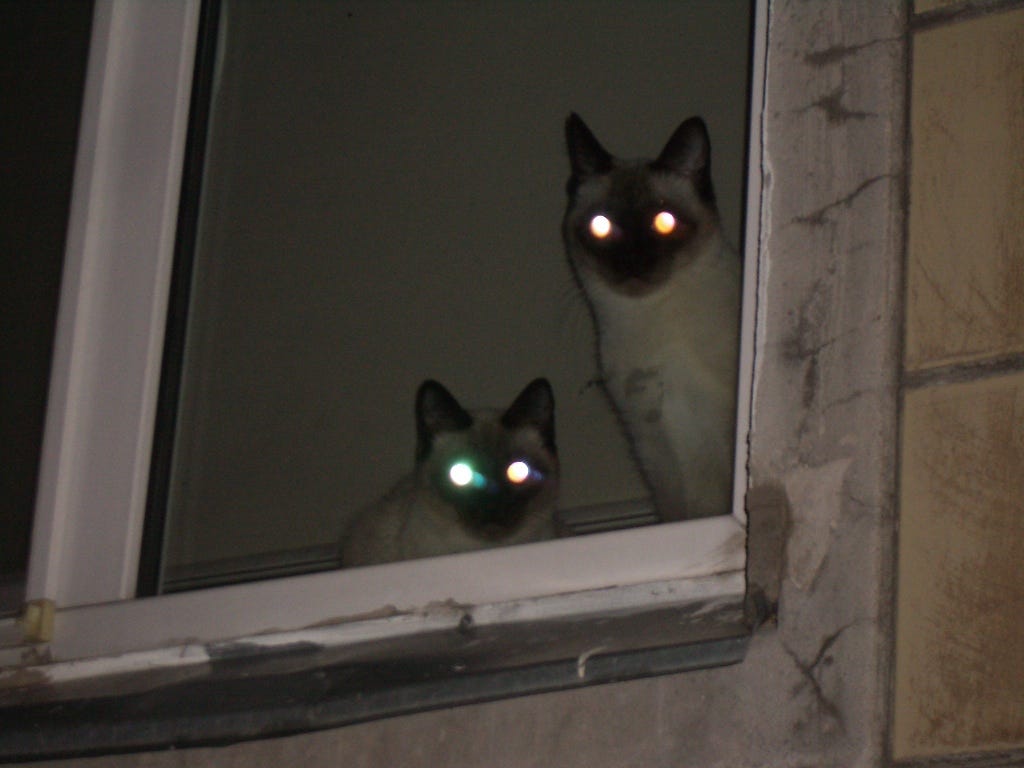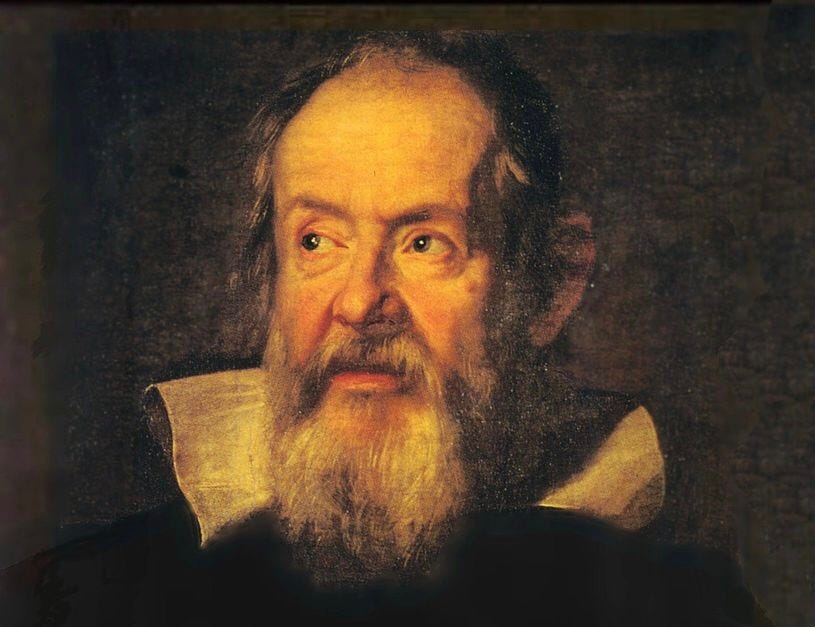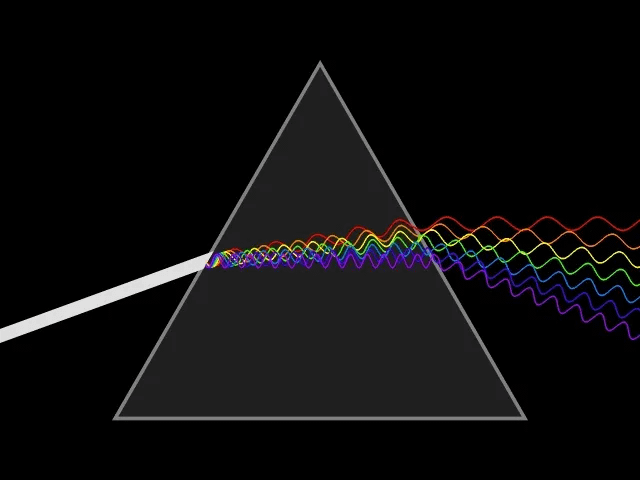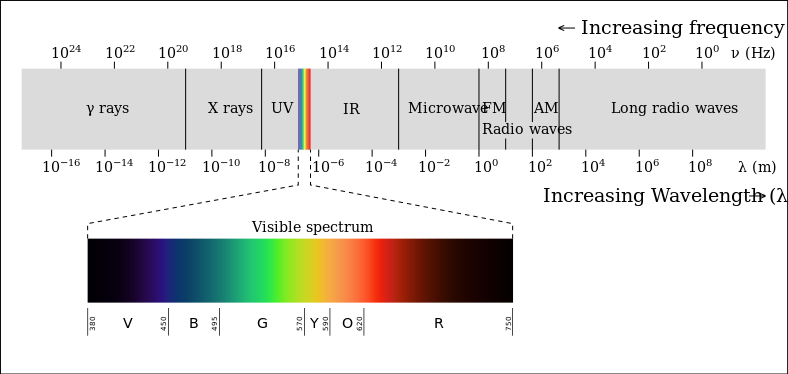Nineteen: "Let There Be Light!"
Clever ideas about light, from religious to philosophical to scientific
The secondary act of cosmic creation in the Bible echoes the explosive illumination of the early universe, as described by cosmologists and confirmed by astronomers. The expanding universe is said to have begun as an intense, opaque soup of matter and energy approximately thirteen billion years ago. It took a theorized 378,000 of cooling after the Big Bang before ordinary matter could form and photons could travel in free paths. Only with the “era of recombination,” could there be a blinding spectacle worthy of a deity’s command.
The remnant of this elemental glow lingers on in the cosmic microwave background radiation: a barely detectable signal at 3K above absolute zero. This astronomical ember was first detected 1965 by British astronomers at Jordell Bank, who couldn’t figure out how the weak signal was coming uniformly from everywhere in the sky. They initially suspected this detected hiss from space was an artifact of pigeon droppings in their radio telescopes.
For centuries, light has had a quicksilver quality, slithering around and past scientific, artistic and religious attempts to define it. In the 21st century it has settled into the conception that it’s not a thing at all - light quanta are as close to no-things as you can imagine. Light is composed of “dimensionless” particles of pure energy.
Oh, and just to add to the confusion, light is also a wave. This is absolutely bonkers, considering particles and waves are about as different as baked beans and Bach fugues…but we’ll get to that in the next post.
Eyeballs and optics
To the ancient Egyptians, vision was of divine origin: an emanation from the eye of the God Ra, who created sunlight through his heavenly act of gazing. The Ancient Greeks brought this notion down to Earth by granting the human eye the power to illuminate the world.

Five centuries before the birth of Christ, the philosopher Empedocles likened the eye to a lantern lit at the hearth of creation. He believed the manifest world was composed of four elements; fire, air, earth and water. The goddess Aphrodite fashioned the human eye from these four elements and lit the fire inside the eye, which shines outward into the world, granting sight.
Light extending outward from the eye to the world outside? This notion, surprisingly backwards-sounding to moderns, is not as counterintuitive as it may seem. Consider the nocturnal glow of a cat’s eyes, which convinced early thinkers of a fire residing within the feline orbs. However, this led to some thorny problems. If the world was lit by light from the eye, why couldn’t human observers see at night like cats? Ah, because night air was opaque, Aristotle argued. A lit lamp makes the air transparent. To the Ancient Greek philosopher, light was the “actualization of the potentially transparent.” Which gives you some idea how much you can get away with if you say it cleverly enough.

To be fair to Aristotle, this was pretty head-scratching stuff. Approximately the same time he was struggling with eyeballs, The Greek mathematician Euclid wrote Optica, in which he outlined the geometrical properties of light. Euclid insisted that light traveled in straight lines, and he was first to describe the laws of reflection.
How could sight result from a beam from the eye, he asked, if it’s possible to see stars immediately? Close your eyes and open them quickly and the stars are in view, with no delay. Light would have to travel infinitely fast if it originated from your head, Euclid reasoned. In your face, Aristotle.
Time for some Enlightenment
During the so-called Dark Ages, Arab thinkers and astronomers rekindled the Greek heritage of knowledge and added their own findings. This all became fodder for the 16th century Renaissance-era astronomer Galileo Galilei, who believed light was a prosaic object for scientific study, rather than just a gleaming emanation of the divine. And although he entertained a mechanical theory of light, he hedged on its true nature, insisting he had “always been in the dark” on “the essence of light.”
Galileo was “willing to be imprisoned in a pitch-dark cell,” he said, “surviving only on bread and water, if only he would be guaranteed on his release into light that he would know what it really was,” observes Arthur Zajonc in his book, Catching the Light. Of course, Galileo narrowly avoided imprisonment after challenging Catholic clerics on another issue: the sun being at the center of the solar system, rather than the Earth.
Scientists and philosophers would continue to struggle with light’s mercurial nature. In his study of optics, the British astronomer Sir Isaac Newton used prisms to coax white light into its constituent colours. With the 17th to 18th century understanding of the mathematical principles of reflection, refraction and interference, it seemed the spooky glow would be finally caged and tamed. The word ‘light’ became embodied into the very word retrospectively used to describe the post-medieval emergence of a scientific understanding of the world: the Enlightenment.
A wee bit premature, as we’ll see.
Across the centuries, light has managed to elude total description or even visualization through scientific modelling. Doubling its strangeness to the ancients was the peculiar force it was sometimes associated with. Pieces of amber (Greek elektron) were discovered to possess a clingy property we now call static electricity. It was felt to be a supernatural force, in the same way that naturally-occurring magnets were believed to be inhabited by souls (which sounds like a New Agey idea well ahead of its time).
When Michael Faraday began to decode the lawful properties of electricity, the most compelling attribute of this force was the ability to generate light. This was soon exploited with electric filaments, which completely gripped the European imagination. Light had previously been understood as being of two kinds: firstly, the warming rays of the sun and of fire, and secondly, an inner or spiritual light associated with visitations and visions. With the invention of the light bulb there was seemingly a third form of light, one that lit everything from cityscapes to the poorest of homes. This light becoming permanently associated with both the secular understanding of the world and the triumphs of applied science.
Today we understand this third form of light is no different from rays of sunlight or firelight. Light is a portion of the spectrum of electromagnetic radiation, which is the mediator of the electric force. Counterintuitively, the electric force is a thousand times more powerful than gravity. The only reason that gravity appears to be substantially stronger is because the electric field has negative and positive charges that cancel out at larger scales. (When you drop a watermelon from the top of a building, gravity is only a tiny trigger. It’s the repulsive force of atomic electron shells - between the atoms of the watermelon and the atoms of the ground - that results in the messy detonation.)
So how does it work?
Here’s the skinny on the electromagnetic spectrum. I’ll make it brief in the hope it doesn’t bore you. Visible light constitutes a very, very tiny portion of this spectrum, bookended by short-wave and long-wave radiation invisible to the human eye. If you were to compare the whole spectrum to a musical scale, there are notes both too high and too low for you to hear. The notes at the high end of the spectrum - of shorter wavelengths than visible light - range from gamma rays to x-rays to ultraviolet rays. The notes at the low end of the spectrum - of longer wavelengths - range from infrared to microwave to radio waves.
If visible light were to be compared to the keys on a piano, you would have to extend the piano keyboard out 150 times its length in both directions to encompass the full ‘octaves’ of light, from high-pitched gamma rays to the low-pitched AM radio band.
Light emissions can be summed up by a few basics: frequency or wavelength, intensity, direction of propagation and polarization. Wavelength is the distance between the peaks of light waveforms. Frequency is the time it takes for the wavelength to pass (quickly for short wavelengths and longer for longer wavelengths). Direction of propagation is, of course the direction the light is traveling. Intensity is just what it sounds like, and is measured in radiant flux.
Boring perhaps, but it’s important to understand the basics to grok the true weirdness of light.
By the late 19th century, complete understanding of light seemed near: it was, according to James Clerk Maxwell, an oscillation of the electromagnetic field: a waveform with electrical and magnetic fields vibrating at right angles to one another.
So imagine a wave going up and down as it travels forward in time. This is the electric field. At a right angle to this is an attached wave traveling forward in time. This is the magnetic field. The electric field pushes the magnetic field forward which pushes the electric field forward. This is the push me-pull you picture of electromagnetic energy that electrical engineers go by to this day. It works well as an explanatory framework.
Maxwell had found the means to corral the findings of all optical, electrical or magnetic experiments into four tight equations. As the 20th century physicist Richard Feynman observed, “Ten thousand years from now there can be little doubt that the most significant event of the nineteenth century will be judges as Maxwell’s discovery of the laws of electrodynamics. The American Civil War will pale into provincial insignificant in comparison.”
By the early years of the 20th century, scientists suspected that visible light was only a thin slice of the radiant spectrum, as I explained above. There were all the other forms of electromagnetic radiation invisible to the eye that they would soon detect and exploit.
A great stumbling block remained for followers of the fellow who had tidied up light into four tight equations. What was light vibrating in, exactly? Just as sound waves requires air to propagate through, there must be some unknown medium that carried light waves. One of Maxwell’s equations is precisely analogous to one the mathematician Euler had derived for the propagation of sound waves. There had to be something physical to act as the medium for light to travel in; it just made sense and anything else didn’t. To keep thing sane, physicists posited a perfectly frictionless medium they called the “luminiferous aether.”
The theory immediately ran into problems and collapsed following the famous Michelson-Morley experiment of 1887, which failed to find any evidence for the aether. The speed of light was discovered to be the same in every direction - which you would not expect on a planet hurtling 30 km per second through space. The measured speed should be less in the direction of movement.
Never let a good crisis go to waste
The collapse of the aether theory was initially a crisis for physics. But also an opportunity, with a new appreciation of light emerging from the intellectual wreckage. It began with German physicist Max Planck resolving some outstanding paradoxes in thermodynamics by assuming that light travels in discrete packets he called “quanta.”
Through the blackboard meanderings of theoretical physicists, quantum theory would offer mathematical precision at the expense of mechanical predictability. As a predictable entity, light would all but evaporate and disappear into a fog of statistical equations.
Galileo died without grasping the ultimate nature of light; would it have heartened him to know that five centuries later his intellectual descendants still struggle for a complete understanding of the light paradox?







